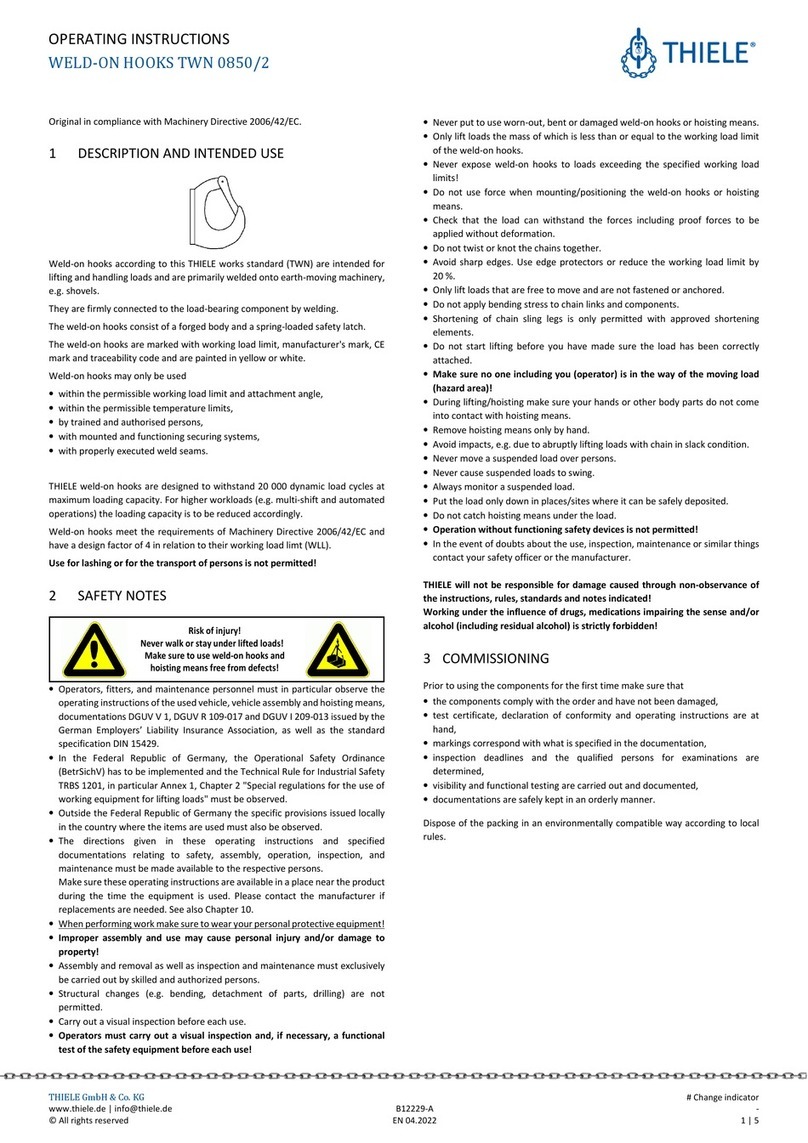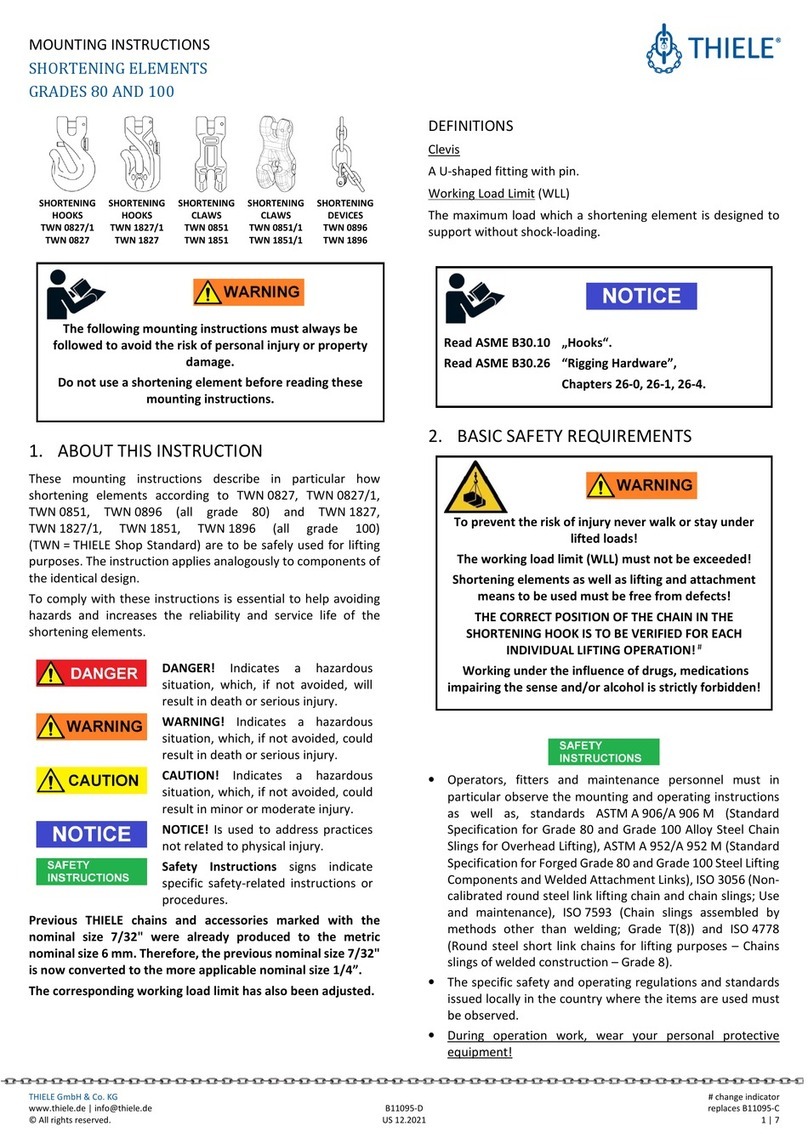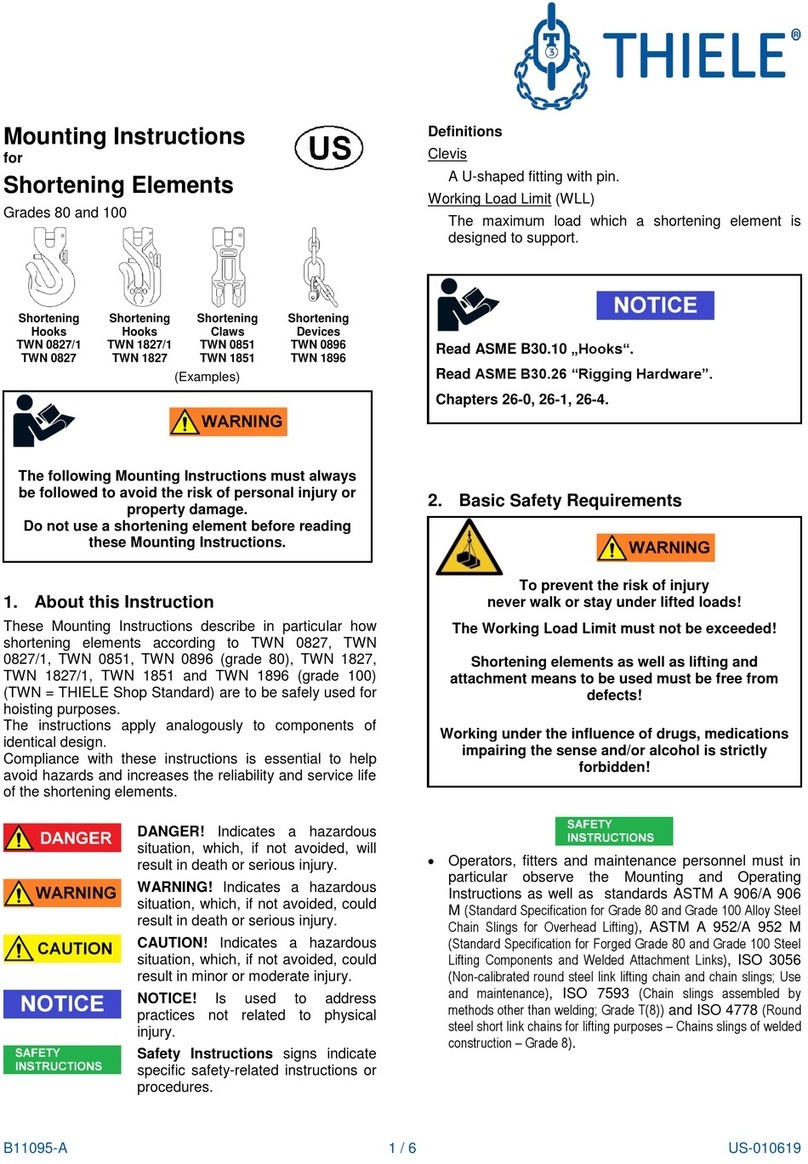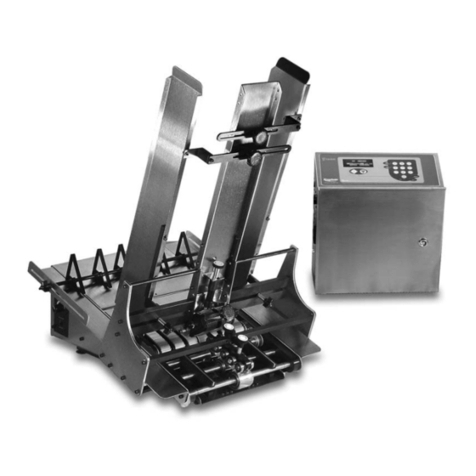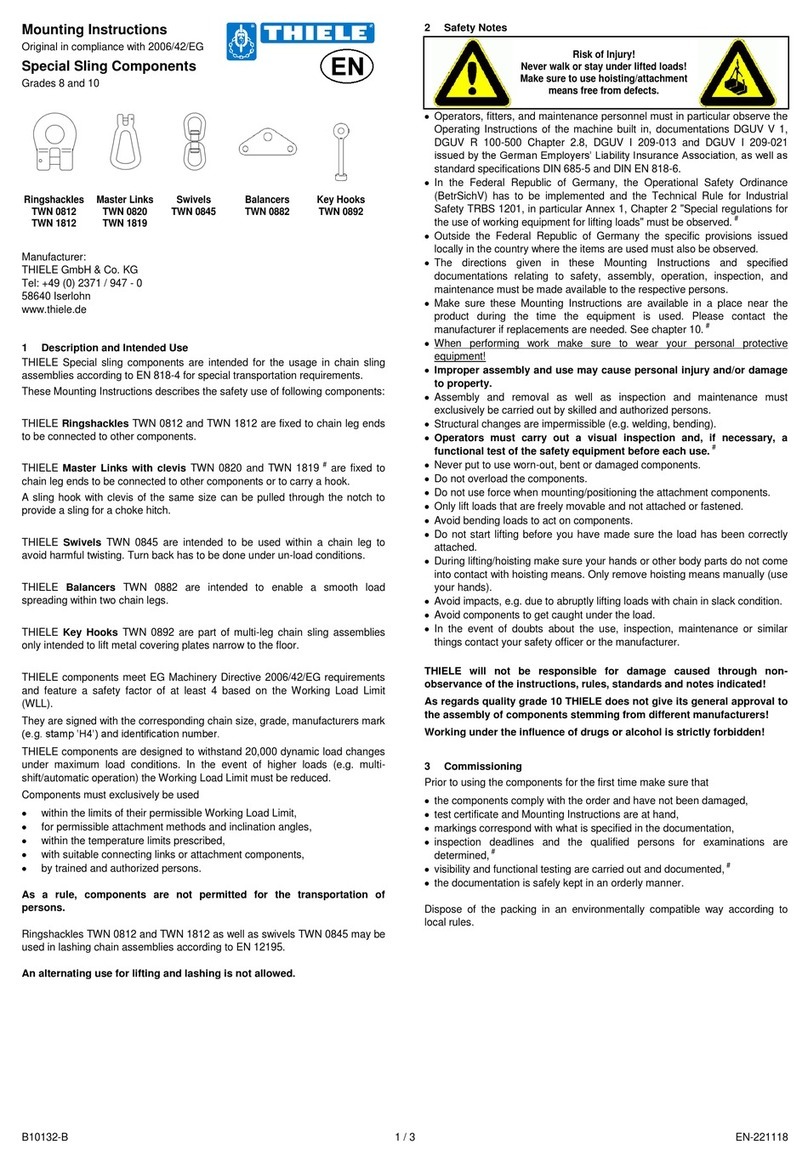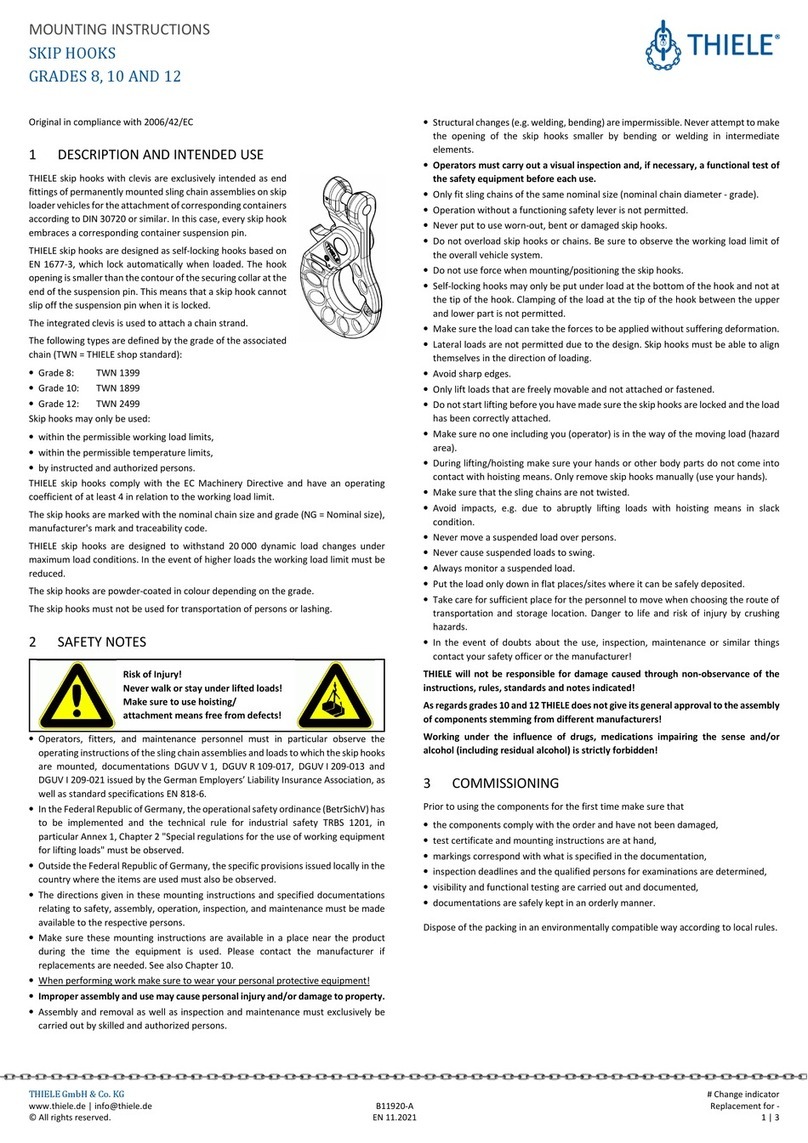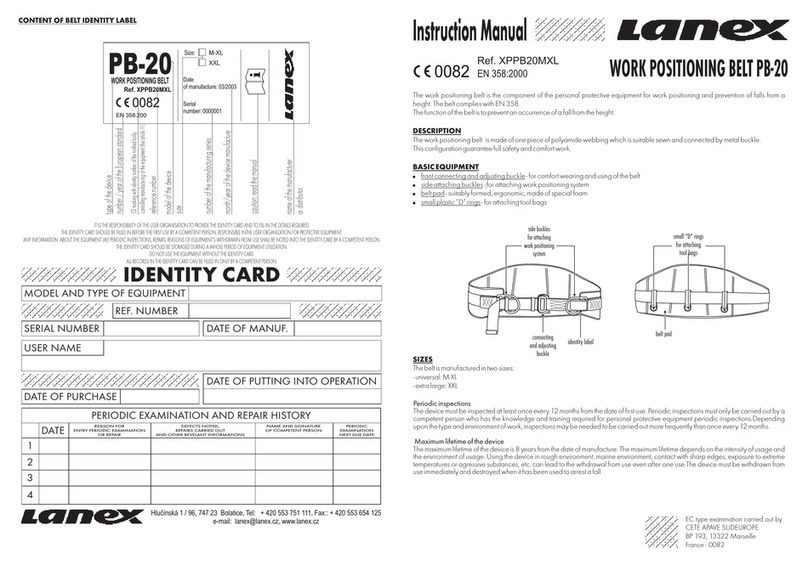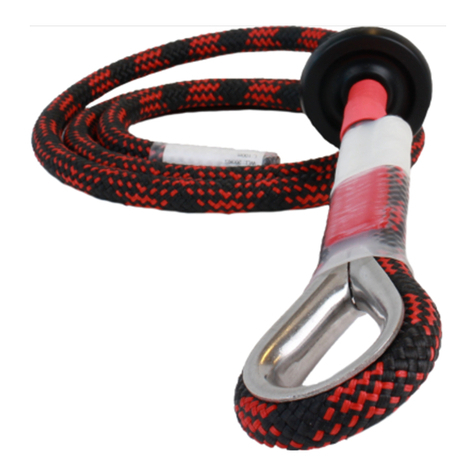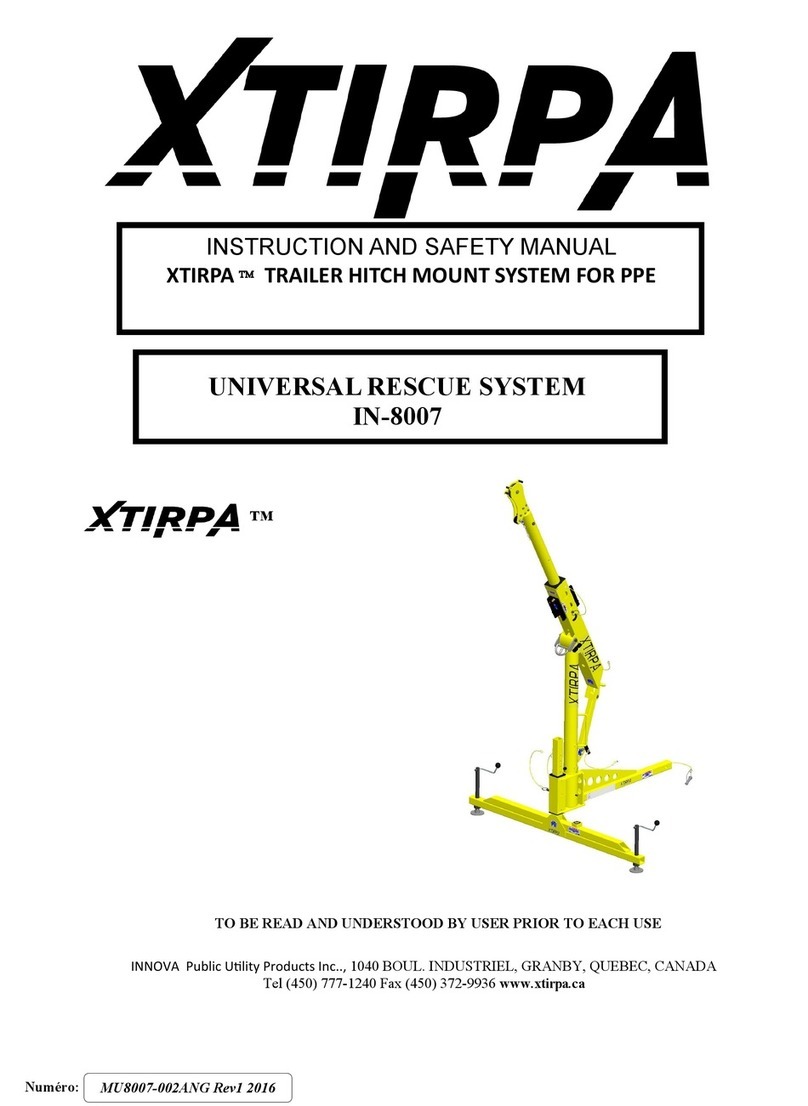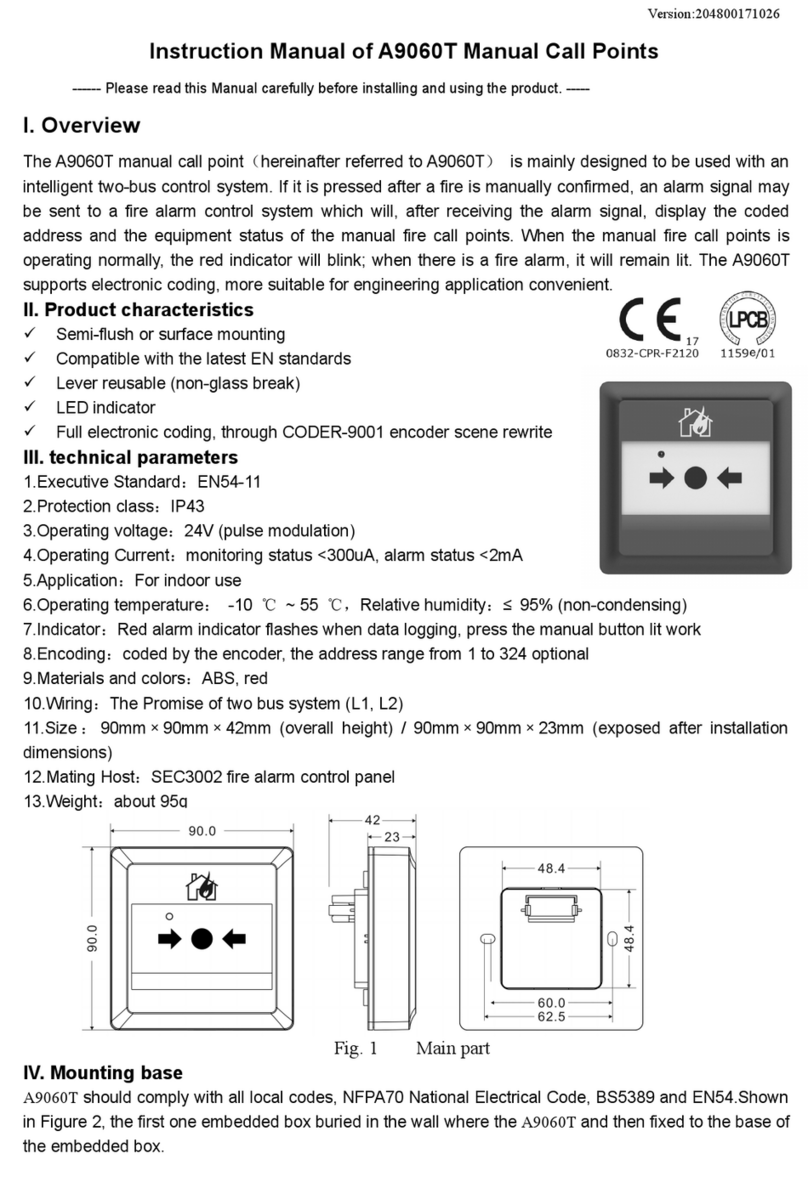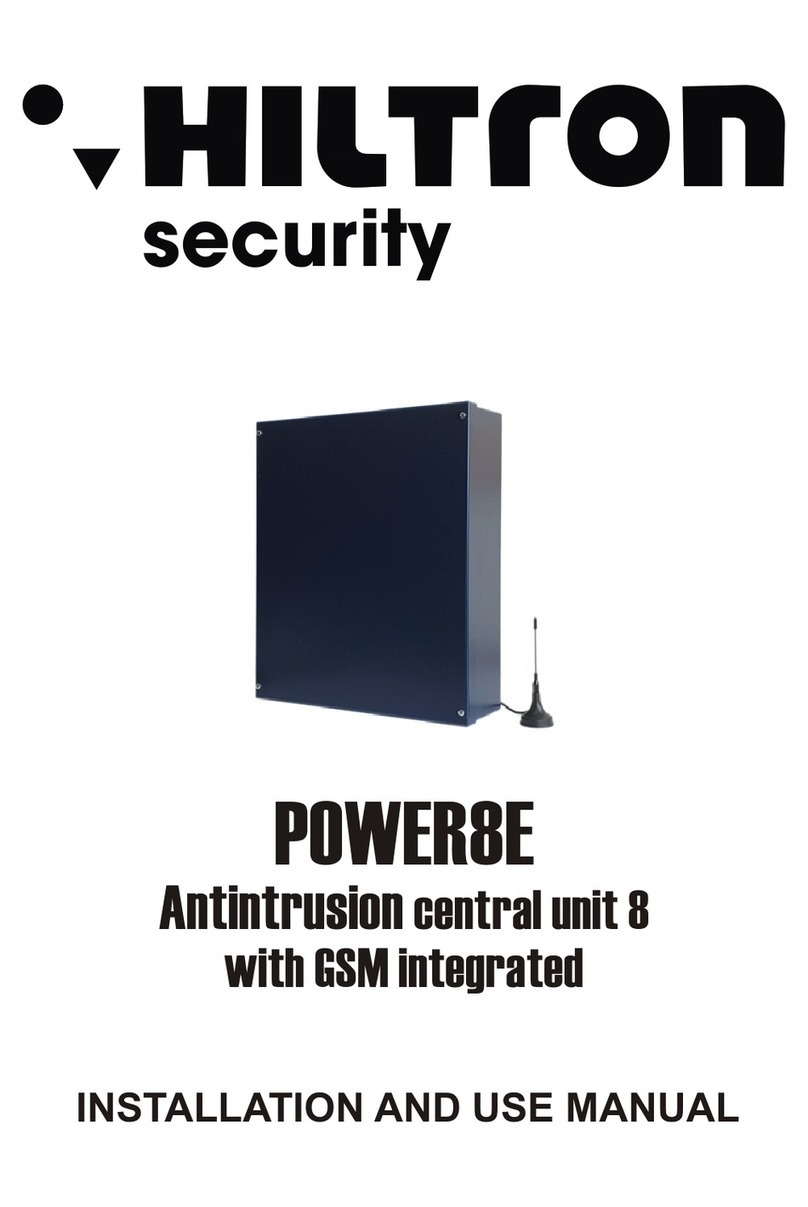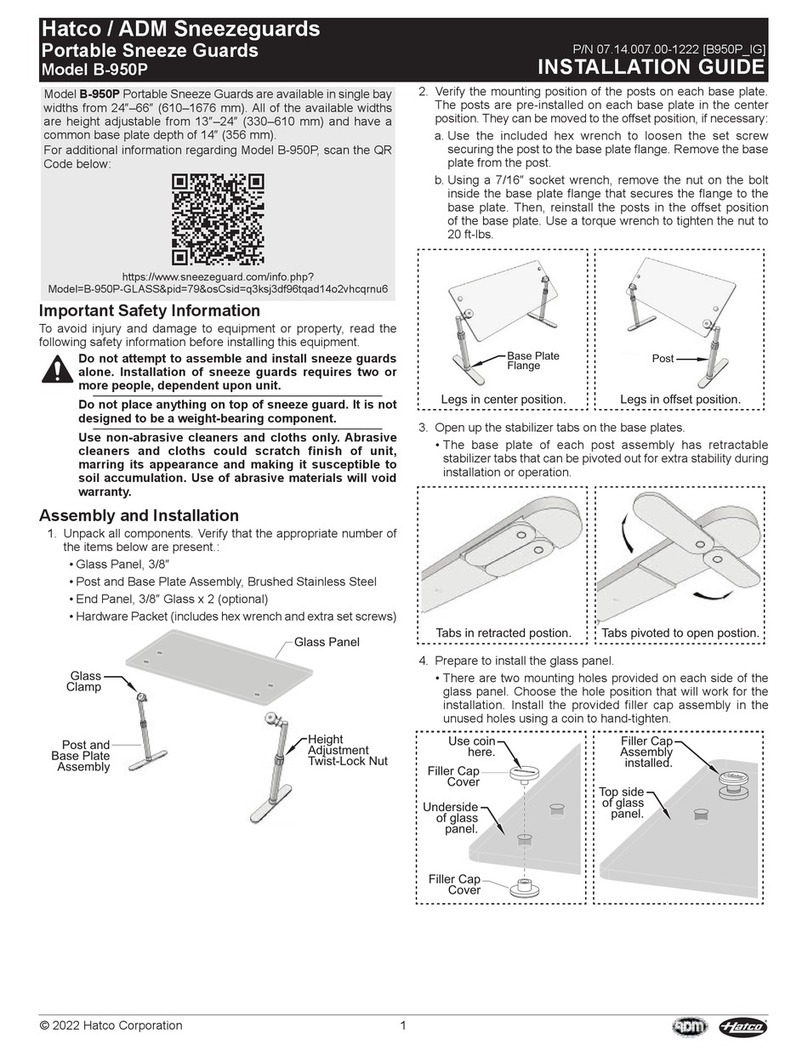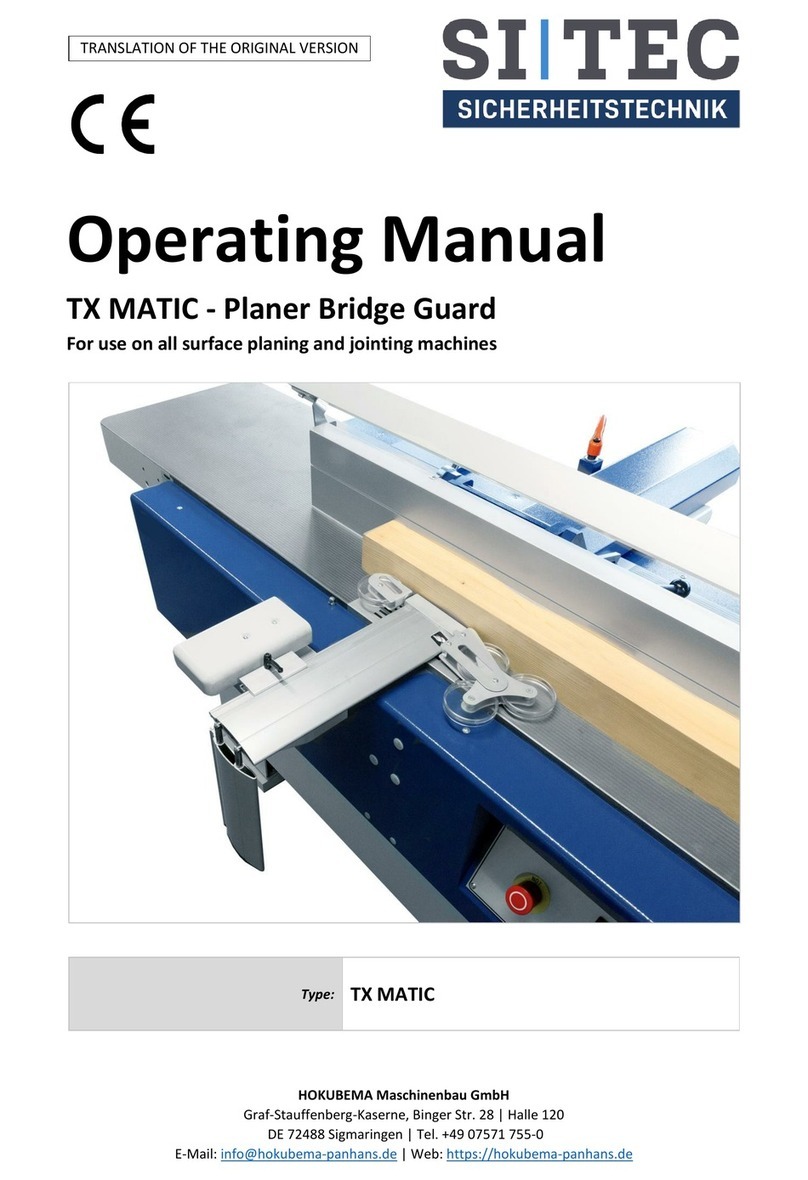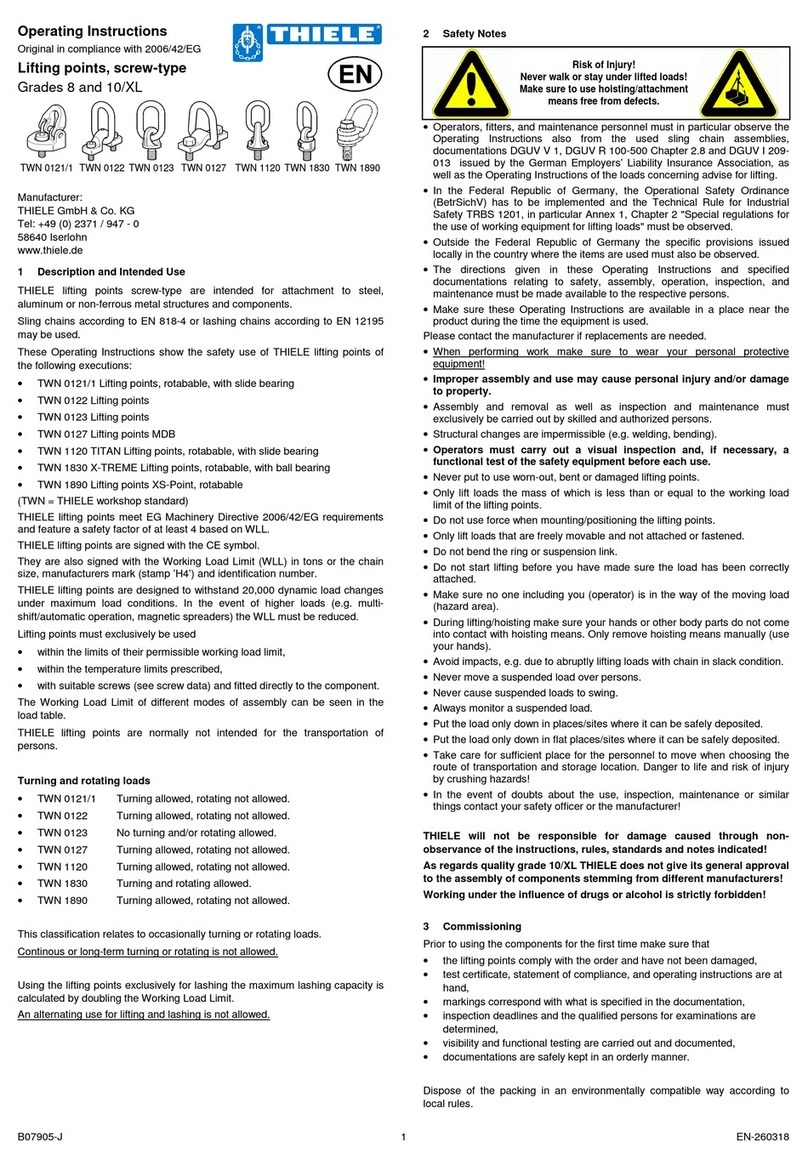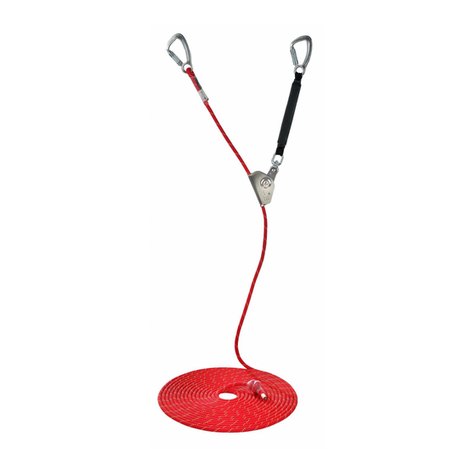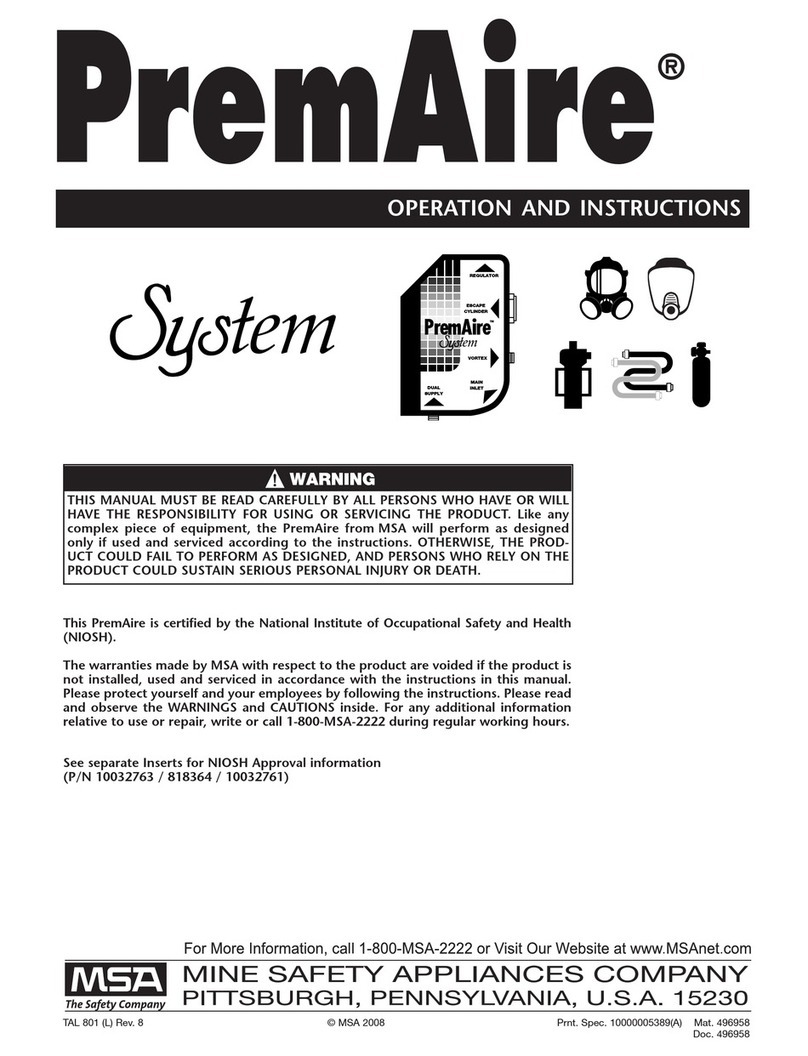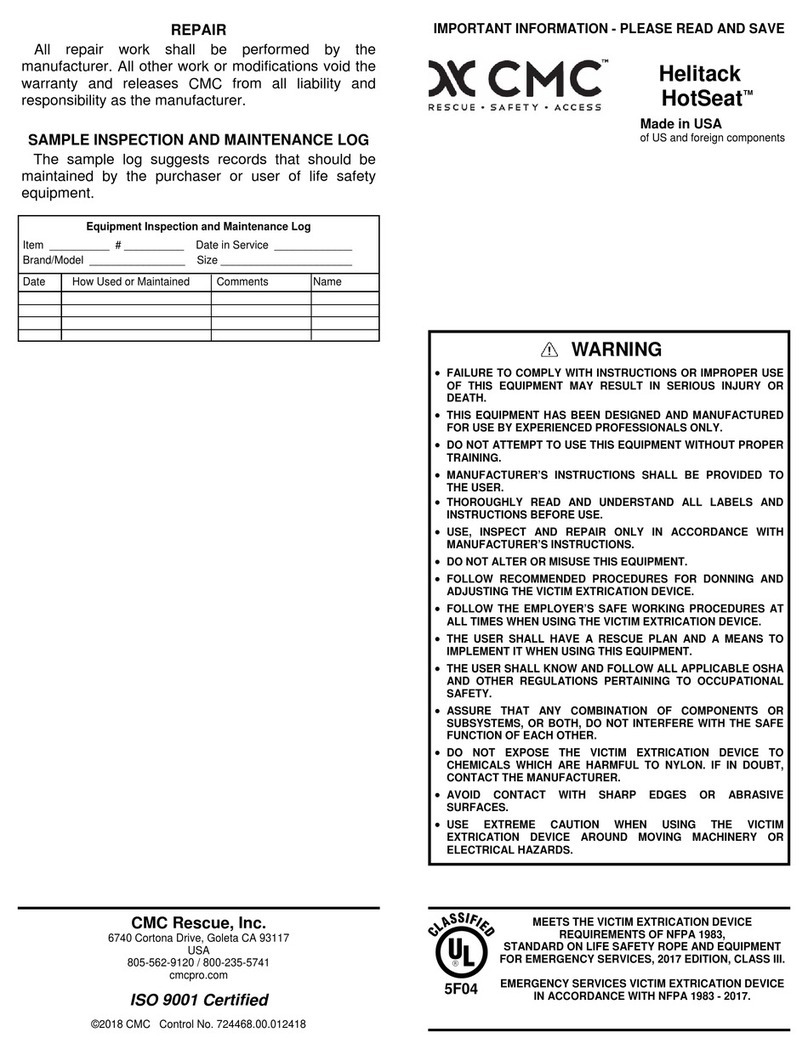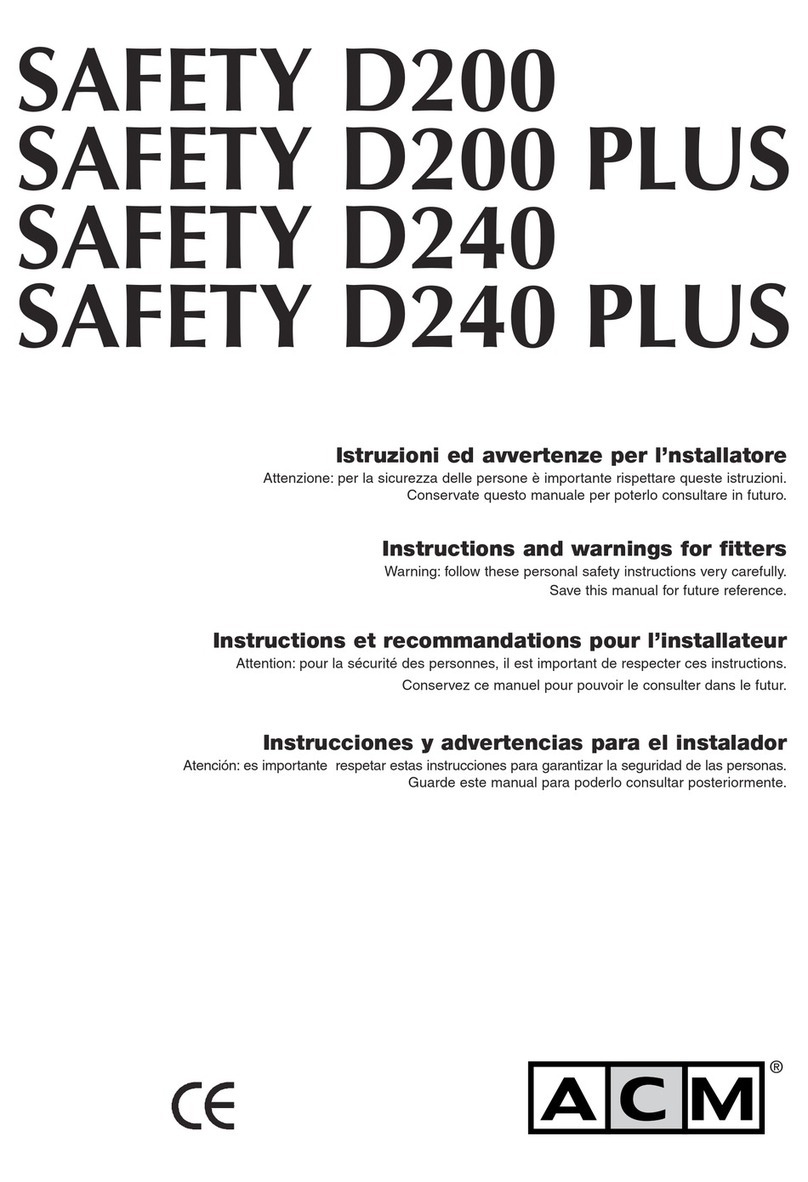•The directions given in these Mounting Instructions and
specified documentations relating to safety, assembly,
operation, inspection, and maintenance must be made
available to persons operating and using the self-locking
hooks.
•Make sure these Mounting Instructions are available in a
place near the product during the time the equipment is
used. Please contact the manufacturer if replacements are
needed. Also see chapter 12.
•During operation work, wear your personal protective
equipment!
•Improper assembly and use may cause personal injury
and/or damage to property.
•Assembly and removal as well as inspections and
maintenance must exclusively be carried out by skilled and
authorized persons only.
•Structural changes are impermissible (e.g. welding,
bending).
•Operators must carry out a visual inspection and, if
necessary, a functional test of the safety equipment
before each use.
•Never use worn-out, bent or damaged self-locking hooks.
•Only lift loads that do not exceed the Working Load Limit of
the sling chain assembly.
•Never expose self-locking hooks to loads exceeding the
specified Working Load Limit.
•Make sure the load can take the forces to be applied
without suffering deformation.
•Do not use force when mounting/positioning the self-
locking hooks.
•Do not tip-load a hook.
•Avoid bending loads to act on chain links and self-locking
hooks.
•Always monitor a suspended load.
•Only lift loads that are freely movable and not attached or
fastened.
•Safety elements must not be stressed or strained
operationally.
•Use only shortening/grab hooks or claws for chain
shortening purposes.
•Do not start lifting before you have made sure the load has
been correctly attached and balanced.
•No one including you (operator) must be in the way of the
moving load (hazard area).
•During lifting make sure your hands or other body parts do
not come into contact with lifting means. Only remove
lifting means manually (use your hands).
•Avoid impacts, e.g. due to abruptly lifting loads with a hook
in slack condition.
•Never move a suspended load over persons.
•Never cause suspended loads to swing.
•Self-locking hooks must only be loaded at their base, never
at their nose.
•Avoid impacts, e.g. due to abruptly lifting loads with chain
in slack condition.
•Do not operate the system without fully functioning safety
devices (cotters, spring pins, catch).
•Loads must only be lifted when the hooks are in a locked
position.
•Self-locking hooks must be allowed to move freely in all
tensile directions.
•Put the load only down in flat places/sites where it can be
safely deposited.
•In the event of doubts or concerns about the proper and
safe use, inspection, maintenance or similar things contact
your safety officer or the manufacturer.
THIELE is not responsible for damage caused by non-
observance of the instructions, rules, standards and notes
indicated!
As regard grade 100, THIELE does not give its approval to the
assembly of components sourced from different
manufacturers!
As a rule, self-locking hooks are not permitted for the
transportation of persons.
3. DESCRIPTION AND INTENDED USE
Self-locking hooks are exclusively intended for the usage in
chain sling assemblies according to ASTM A 906/A 906M.
The connection to the sling chain is made directly by the clevis
or indirectly by using connecting links which are assembled to
the eye.
Self-locking hooks must exclusively be used
•within the limits of their permissible Working Load Limits,
•within the temperature limits prescribed,
•for permissible attachment methods and sling angles,
•by trained and authorized personnel,
•with original connecting bolts and pins of the specified size.
Failure to do so may cause serious injury or property damage.
Self-locking hooks meet EG Machinery Directive 2006/42/EC
requirements and feature a safety factor of at least 4 based on
the Working Load Limit.






